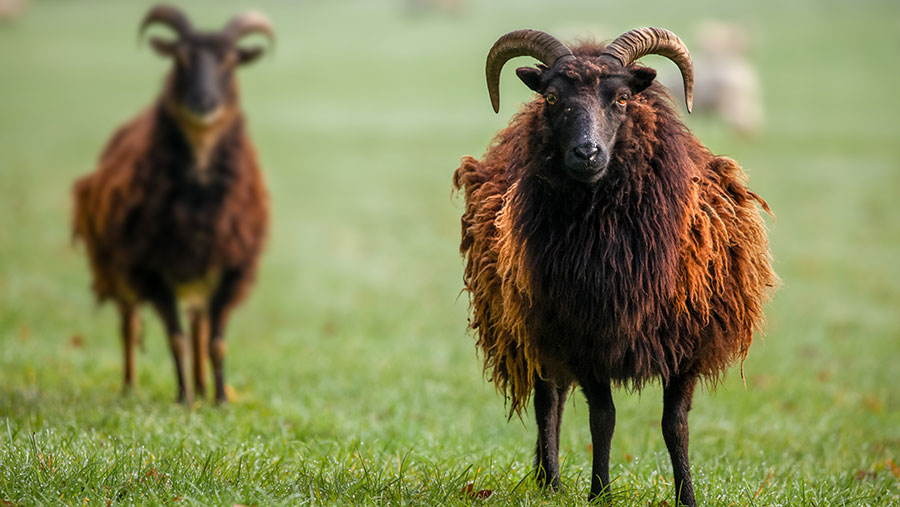Sheepdog School: What’s the best sheep breed for trainee dogs?
 © mreco/Adobe Stock
© mreco/Adobe Stock Man’s best friend, a loyal companion, and a farm’s greatest asset – the value of a well-trained sheepdog cannot be overestimated.
But even the most experienced of collies can have their quirks, leaving farmers frustrated and unsure on the best course of correction.
Here to help with training challenges are shepherding husband-and-wife team Emma Gray and Ewan Irvine, who are known for breeding, competing and training some of the country’s finest sheepdogs.
In this month’s sheepdog training tip, the pair tell Farmers Weekly about the best sheep breed for a young dog.
See also: Sheepdog School: What training equipment do you need?
“We get asked all the time what the best sheep for sheepdog training are. The short answer? It’s Hebridean sheep.
“The Hebridean breed is a smaller-framed native breed which has high intelligence and, within one or two sessions, turn into brilliant training sheep.
Light and free-moving
“They have good ‘flockability’, which is key. You don’t want your sheep splitting and being easily separated.
“For example, Shetland sheep, while also smaller-framed natives, are quite independent. They don’t bunch or flock well, and as such are not well-suited for young dogs.
“It makes your life so much easier if your sheep are good for training. You want something that is light and free-moving and responsive to your dog’s moves.
“The opposite are heavy, dull or, worse yet, aggressive sheep. An example would be your tups.
“They are often in a convenient smaller packet close to the farm, but they do not move and react freely to a youngster, so it’s best to avoid at all costs.
“We want our youngsters full of confidence and achieving success, so we want to avoid conflict situations.
Welfare is a priority
“Teaching your youngster to herd is demanding for both your dog and your sheep. Welfare of animals is a priority, so keep the sessions short.
“Heavy, lowland ewes won’t have the fitness to stay free-moving for long and will quickly learn to stand in the corner of the field when they see you coming, making for an awkward and intimidating start.
“We find the Hebrideans learn to hold to the handler, keeping off the fences and have that movement we need to keep youngsters keen.
“Normally, they can be picked up reasonably, sometimes from other sheepdog trainers, already dogged, and this investment will pay dividends for you and your dog.”
